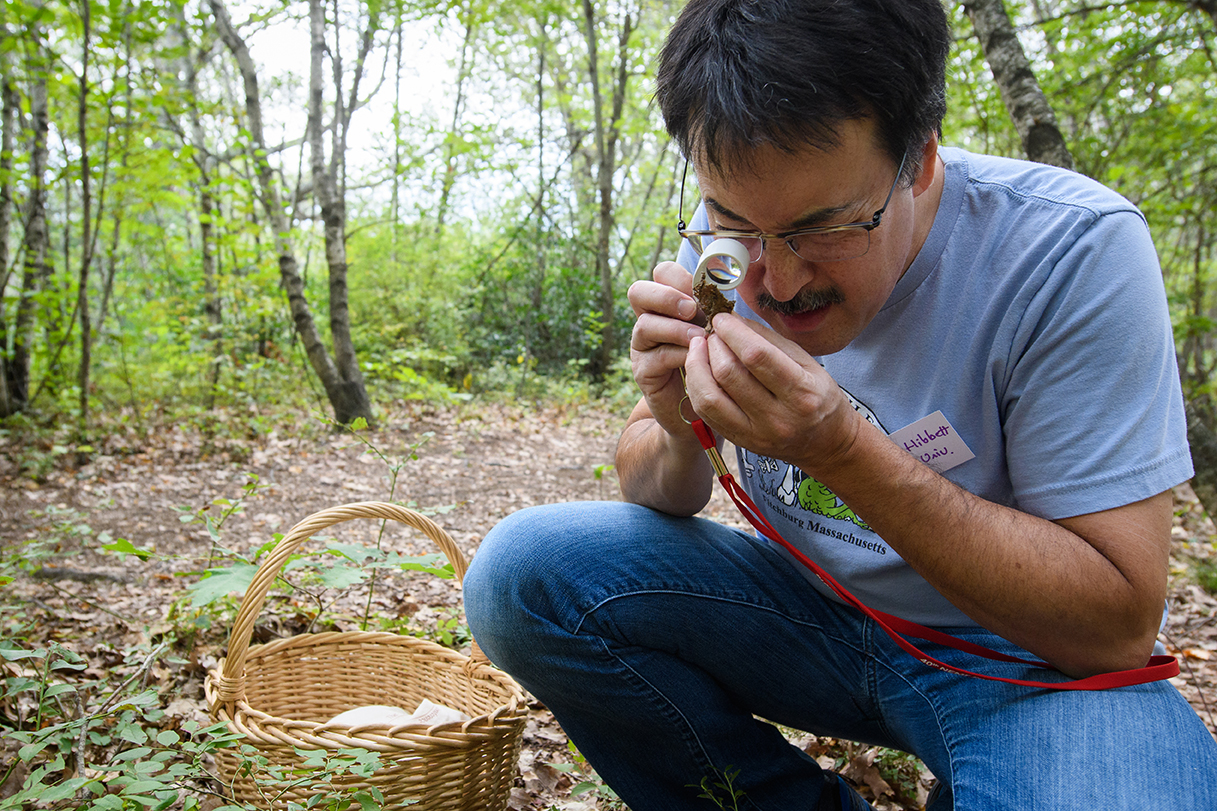Clark mushroom research earns publication by the National Academy of Sciences

Mushrooms are everywhere — in the woods, on your lawn, or in the supermarket. Mycologists (fungal biologists) estimate that there are at least 36,000 species of mushroom-forming fungi, called Agaricomycetes, but understanding why there are so many kinds of mushrooms has been a classic conundrum of mycology.
To address this mystery, a team based at Clark University, led by post-doctoral fellow Marisol Sánchez-García (now a professor at the Swedish Agricultural University in Uppsala) and biology professor David Hibbett, constructed a gigantic evolutionary tree containing more than 8,400 species of Agaricomycetes. They used the tree to trace the evolution of ecological characters and “fruiting body” forms — another term for mushrooms. Through its research, the team found that the evolutionary success of Agaricomycetes depends on their shape.
Hibbett recently published the study, “Fruiting body form, not nutritional mode, is the major driver of diversification in mushroom-forming fungi,” in Proceedings of the National Academy of Sciences.
He explains that two major hypotheses have been advanced about why so many distinct forms of mushrooms exist. One theory suggests that mushrooms proliferated due to their ecological associations with plants, as many Agaricomycetes form mutually beneficial symbioses with trees, such as oaks and pines, while others contribute to the decaying process of wood and leaf litter, and a few cause plant diseases. Another possibility is that Agaricomycetes diversified thanks to efficient spore dispersal from their complex fruiting bodies.
“Most Agaricomycetes produce fruiting bodies with the classic toadstool shape — with a cap and stalk— but there are also coral-shaped mushrooms, puffballs, bracket fungi, and other strange and beautiful forms,” Hibbett says.
Through their analysis, Hibbett and his team found that Agaricomycetes’ evolutionary success depends primarily on the shape of their fruiting bodies. Groups with a cap-and-stalk fruiting body tended to produce more species than lineages with other kinds of fruiting bodies, regardless of their ecological roles.
“Agaricomycetes are roughly 300 million years old. They have seen the rise and fall of the dinosaurs, and the origins of both mammals and flowering plants. Through it all, it appears that the classic toadstool has been the right shape for a mushroom,” Hibbett says.
Hibbett is considered one of today’s leading researchers in the analysis of fungal relationships through DNA analysis. He was recently included on Clarivate Analytics’ list of Highly Cited Researchers 2020, which recognizes leading researchers who have produced multiple highly-cited papers that rank in the top 1 percent by citations for field and year in the Web of Science.


